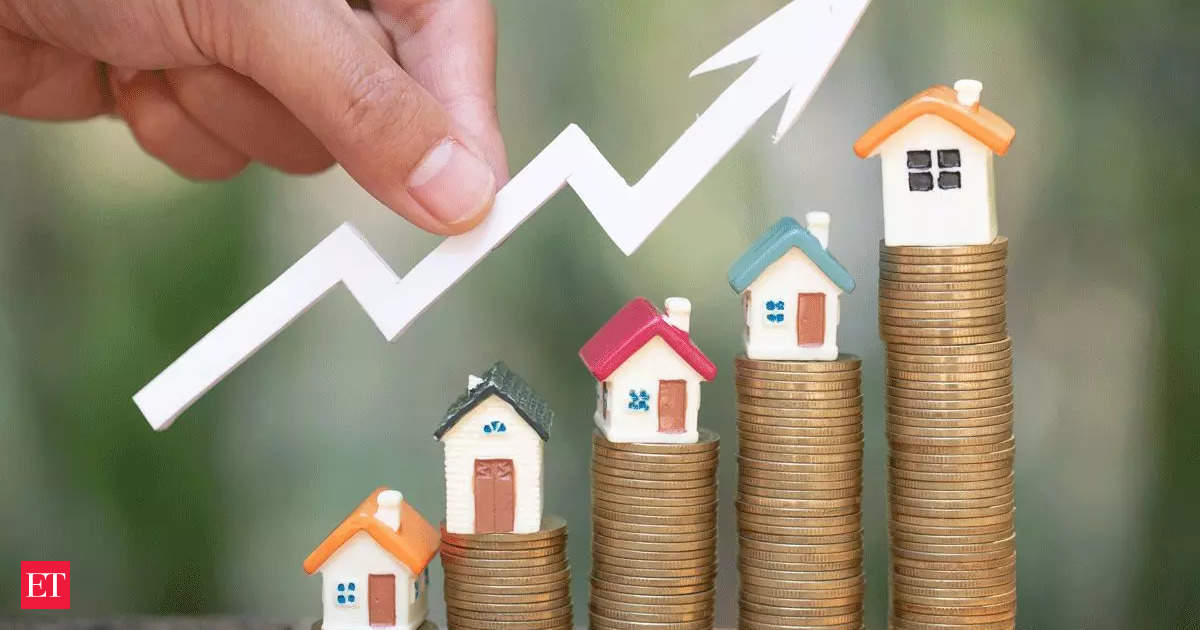Interestingly, quarterly price movements at the India level have been almost similar, around 3%, over the last four quarters.
On an annual basis, average house prices at the end of June showed a 12% growth across the top eight cities. Interestingly, 7 of the 8 cities analysed saw year-on-year price appreciation, with Delhi-NCR recording the highest price increase at 30%, closely followed by Bengaluru, the data showed.
While unsold inventory remained stable on an annual basis at the all-India level, it declined marginally on a quarterly basis amid healthy housing unit sales. Kolkata recorded the largest sequential decline in unsold inventory levels at 5%, followed by Pune with a 3% decline.
At the end of June, there were over 10 lakh housing units available in the primary market of eight major cities, with MMR alone holding a share of around 40% in unsold inventory levels. Despite the year-on-year rise in the number of unsold units in Hyderabad and Bengaluru, both cities saw a moderate decline in sequential terms.
As the festive season approaches, developers are likely to keep a close eye on new launches and the overall housing stock in key residential catchment areas. real estate “The real estate sector has been on an uptrend over the past few quarters, corroborated by the transaction volume across the top eight cities as well as the prevailing positive sentiments towards housing. There has been a direct impact on housing prices, signifying not just the underlying demand but the definite shift towards real estate as a preferred asset class,” said Boman Irani, President, CREDAI National. With the upcoming festive season, coupled with the Government’s focus on infrastructure and a relatively stable credit ecosystem, he expects this boost to have a greater impact on both prices and unsold inventory levels, as the industry’s supply-demand dynamics change.
“Housing demand has remained healthy over the past few quarters. At the same time, stable interest rates and recent positive budget announcements have provided tailwinds for the country’s real estate market. Notably, average house prices have witnessed a consistent double-digit annual growth rate (12% in Q2FY24), adding momentum to the sustained growth story of the residential real estate sector,” said Badal Yagnik, CEO, Colliers, India.
The real estate market is expected to end well in 2024, led by the upcoming festive season which is expected to further boost the real estate market with increased sales and new launches.
“Sales in Indian cities have maintained their growth despite rising prices. The current quarter also showed a remarkable 33% increase in new launches in the affordable segment. NCR’s sales growth and new launches augur well for the market to continue on a growth trajectory,” said Pankaj Kapoor, Managing Director, Liases Foras.
Delhi NCR, the city that tops the top eight cities, recorded a 16% sequential increase in housing prices. Bengaluru also saw significant price appreciation, with average housing prices in the city crossing the Rs 11,000 mark during the quarter. Average residential prices in the city increased by 8% on a quarterly basis.
Excluding the Mumbai Metropolitan Region (MMR), unsold inventory levels have declined by up to 5% quarter-on-quarter across all cities analysed, the data showed.
While MMR recorded healthy sales of residential units during the period, a significant rise in new launches led to a marginal increase in unsold units. On a year-on-year basis, with a decline of 13%, Pune in particular witnessed the largest year-on-year decline in unsold units. The year-on-year decline in unsold inventory levels has also been significant in Ahmedabad, Chennai and Kolkata, with a decline of 6-8%.
Disclaimer:
The information contained in this post is for general information purposes only. We make no representations or warranties of any kind, express or implied, about the completeness, accuracy, reliability, suitability or availability with respect to the website or the information, products, services, or related graphics contained on the post for any purpose.
We respect the intellectual property rights of content creators. If you are the owner of any material featured on our website and have concerns about its use, please contact us. We are committed to addressing any copyright issues promptly and will remove any material within 2 days of receiving a request from the rightful owner.

